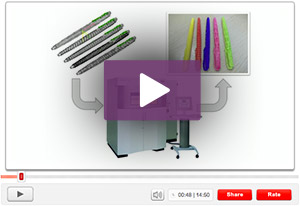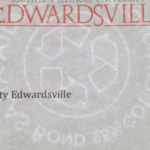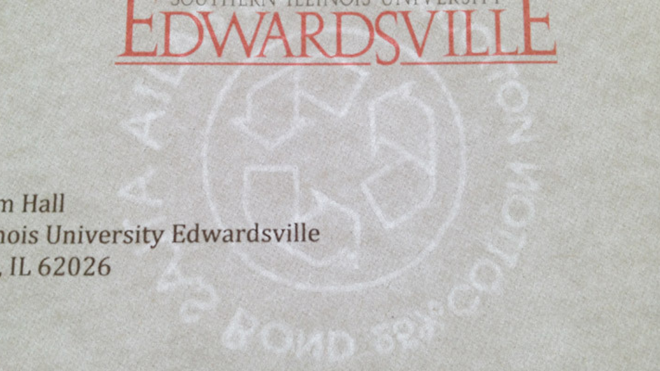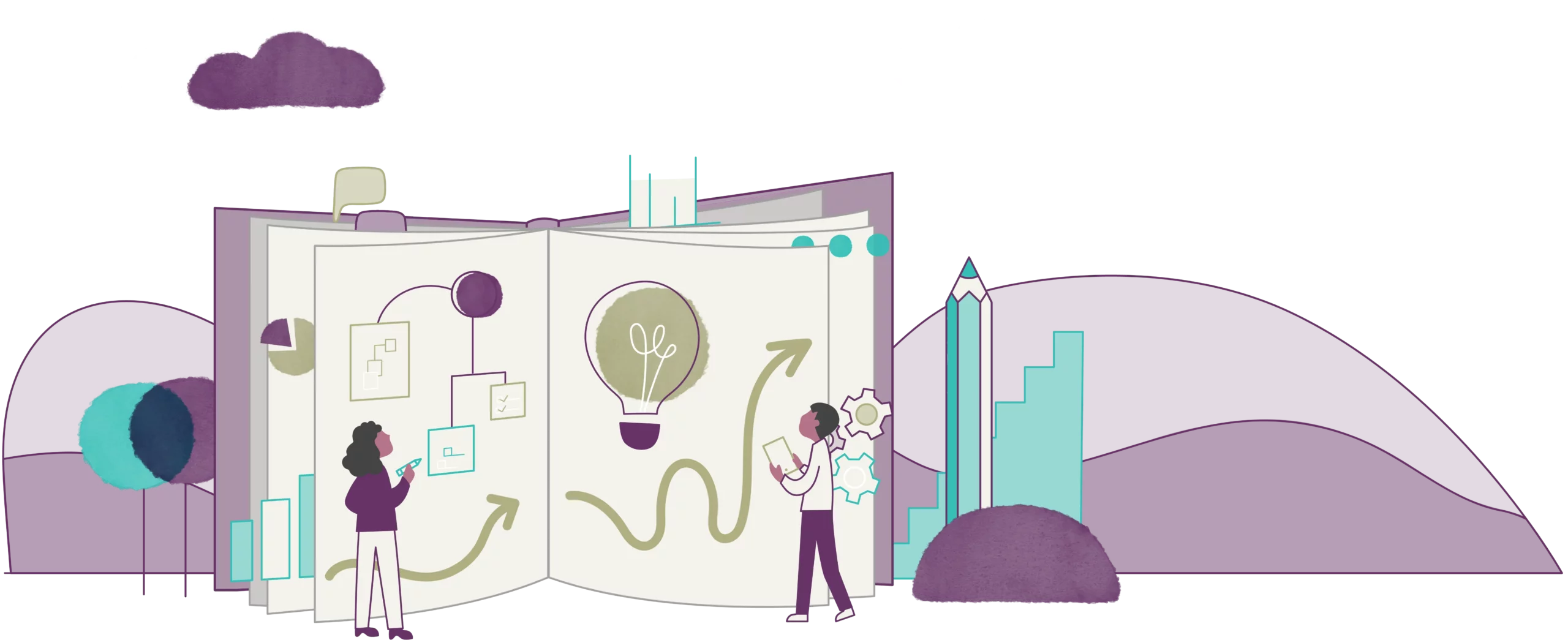
There are an uncountable number of posts written on the subject of how to break designer’s block. Many say the same thing: relax, go outside, go somewhere creative. And some of these work well for others. I have found more specific ways that tend to work for me. Not to say the others don’t work, but I have found it very useful to compartmentalize my work into spaces, physical and mental. I have a space I design in, a space to learn, and a space to play. Mixing them up too much can create the same problem as having a TV in the bedroom: it’s the activity you associate to the device that puts you in certain spaces, again physically and mentally.
These suggestions below are outside the norm of ramming in more design inspiration on top of an already frustrating experience of being blocked. I find these helpful for when picking up a design book or cruising design ‘best of’ websites aren’t working.
If I am frustrated by the design I am working on, it is worse for me to forge ahead because of some deadline than it is to take time out and work on it when I am in a better design state. We all know (or should, at least) that pushing hard on a design when it isn’t working can often cause bad design, wasted time and rework.
While some of the suggestions below mention finding design inspiration during the process, the point is NOT to seek design in these spaces. Design is everywhere you look, you don’t need to seek it out, just turn your head. These exercises are placing you in a new space. Design inspiration is optional and not guaranteed. But, new ideas are.
Let’s get to it and break your designer’s block

(the end is mind blowing!)
1. TedTalks video –
But first, step away from the device you normally do your design on. This seems to make a big difference to me in that I watch the videos on my phone or iPad. It’s like compartmentalizing my learning and inspirational space from my design space. I have put thousands of hours into standing at my computer (yes, standing) to design and code and even learn more about designing and coding, that I have come to think of it as the ‘work computer’. Even when I watch a Netflix movie on it, I still feel myself lurching into design/coding mode, never fully relaxed or immersed in the movie. When I watch it on the iPad, I rarely feel like I should be designing: it’s become a place to step outside work (except on those occasions when I am testing a website on the iPad.)
2. Work space vs inspirational space –
I am starting believe that I have created three spaces—one for daily work, one for mobile work/tasks, and one inspiration/relaxing—not only with three devices, but also three locations and three physical positions. Here is how it works for me: I have a standing desk with a dedicated computer where I do 95% of my work (web design, mostly); I have an iPad that I use for testing websites, but is mostly use it for TedTalks, games and, well, that’s mostly it; I have a laptop for travel and backup. Three devices that are used in three different locations and each has a different purpose and posture: I stand at the standing desk; I recline with the iPad, and I sit at a table with the laptop. Over time I have carved out not only physical space for the use of these devices, but I have also dedicated the vast majority of their use to specific areas of my work, play, and inspiration. I now feel like that when I pick up my iPad I am in inspiration mode (even during gaming). When I sit with my laptop I often feel like blogging or taking on tertiary tasks I don’t often get to do during my work schedule (admin stuff.) When I have a design/coding block that I can’t get around, I often leave the workspace and recline with the iPad and watch a TedTalk (or four). I am amazed at where my mind is at after just one good talk.

Many of you are probably skipping this section, but DON’T! Take a minute and hear me out. I know drawing or sketching can be scary for some. And for those of us that used to do it more often, but have succumb to the mouse/Wacom pen, feel we lost our touch. This exercise is NOT to improve my design skills or even to work through the design block. It’s simply a way for me to go to a place where I am doing something I liked to do back in the day, but also don’t have the free time to do it like I did before ‘adult life’ set in. I find that grabbing my favorite childhood comic Deadman and sketching a cell or two really helps break the block. It’s still design in a sense, but I am really focusing on copying here. Not tracing, but trying my best to visually copy the comic’s cell and not add to it. This takes me out of conceptualizing and forces me reach way back and dust off those comic book shading skills. For me, it’s important that I don’t create during this space/moment where I am trying to break a block, but instead release the concepting mode. I believe drawing works for me in that I have come to rely so heavily on my Wacom pen that I forgot the feel of the pencil hitting paper, and it really takes me way back to the days I would spend hours redrawing Iron Maiden and Dio album covers over and over and over.
4. Walks (or errands) –
OK, so this isn’t all that new or interesting to some (or even possible for others.) And by walks, I mean leaving your space with a set goal of getting a task done on your long to-do list. I grab a stack of books and turn them in to the used book shop down the street. BUT, I walk there, or take the bus. (If you drive every day, this is especially useful for getting through the block.) I leave my design space, I have an agenda, and I have a reward at the end (monetary, trade or checking off the to-do list.) This used to be just a walk to the park or to get a burrito, but I found that without the task at hand, my mind would wander back to the design I was working on. The whole point is to leave the space and the design back there, and go into a new space with a new task on your mind. I also find that mundane tasks like pursuing the used book shop can even yield a few gems (my recent finds have been a small stack of Christie’s auction house catalogs that I use for period and pattern design. But more on that in another post.) I also find getting my hair cut works quite well (I really zone out during that time), but can’t be done too often, of course.
5. Tours –
Tours are definitely way outside the box. They can be a tour of your local U.S. government building, Alcatraz, a brewery or winery, or a letterpress shop. Unless you are living in a 1-person town, there are tours everywhere, especially in those small towns. You may be surprised that your little Main Street yields a few interesting, if not odd, tours that are free or donation-based (the more odd the better, in my opinion.) I think of this like combining the walk with a living TedTalk. It’s like all of the above, minus the drawing (depending on the tour.) Though the goal is to break the block by removing you from the physical and mental space you are working in, I have found some amazing design inspiration during tours in breweries and those odd mini-/popup-museums. A tour of a marine museum in Greece and seeing all those old dials and gauges yielded some of my favorite inspiration.
What was the point of that?
This is three-fold. One is to remove yourself from the physical and mental space you are working in, to give yourself the ability to let other ideas pour in. Like grabbing an empty cup from the shelf and seeing what fills it, if anything. In order to do this, I have made it a point to keep my workspace fairly limited to one computer and one place. This allows me to move about the room and city without ending up at another place I design at and walk into design mode again.
The second is that you can find inspiration from some amazing places. The faces of dials in a museum in Greece. A TedTalks video about 3D printing devices to improve heart surgery. A catalog of old books. Even a duck pond. It’s about leaving it behind and being open to the world around you. Even having lunch with a friend reminded me of the Crystal Goblet story from school, which brought back a lot of good design memories.
Third is to be ok with it. I get frustrated by a design I know should work, but when I decide to walk away and watch a TedTalk I have to be committed to it. So, I have to be ok with letting the design go for 15 minutes to a day and come back to it when I have something to offer. Sometimes it means front-loading a project that is next on the list, but often 90% of the battle is being OK with not nailing it on the first go around. Not easy to do for some. I have found that leaving the space helps with coming to grips with the fact I didn’t nail the design out of the gate. And this is what opens my mind to the possibilities out there instead of actively looking for a solution in the outside world, some design book, or on some ‘top 10 best of’ design blog.
I don’t have time for this, I have a deadline!
We all have deadlines. As a professional you have to ask yourself if what you are doing isn’t working will more of the same make it any better? Like if the 6 rolls of plumber’s tape aren’t stopping the leak, maybe we should try another approach? Spoiler alert! I would rather tell the client I need another day or two than hand them garbage and have to talk through it. Except in some extreme cases, you really can set ‘deadline pride’ aside; this work is representing you and your business. And don’t tell the client 5 minutes before the deadline, but as early as possible.
These work for me. But, I am always open to what works for other people. Please feel free to share your unconventional block busters in the comments below.


